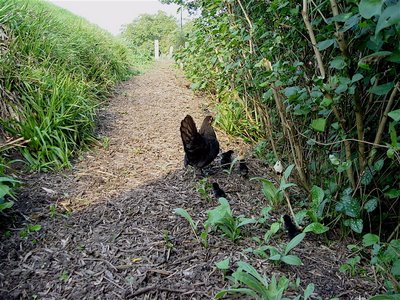Op 30 augustus ben ik met de eerste 10 kilo appels begonnen, die staan nu al weer een meer dan een week in de fles te borrelen. Het waren appels van een vrij jonge boom in onze tuin, volgens het label zou het een sterappel moeten zijn, maar dat is het beslist niet.
On 30th August I started on the first 10 kilos of apples, which have been bubbling in their bottles for more than a week now. They came from quite a young tree in our garden.

10 dagen terug hebben wij van twee oude bomen in de dijk ruim 30 kilo geplukt. Die appels worden gewassen en met behulp van een bij de firma Duikelman gekocht 'splittertje' in partjes gedeeld. (Ik denk overigens dat ik dat proces ga 'automatiseren', het kost zichtbaar te veel inspanning en dat is niet nodig.) Voor de techneuten onder u: moet de appel door het mes of het mes door de appel?
Ten days ago we picked more than 30 kilos from two old trees in the dyke. I proceeded to wash them and cut them into segemnts using a 'splitter' bought at firma Duikelman. As an aside: I am considering speeding up the process, since this takes an unnecessary amount of time and energy. For those of you with technical know-how: should the apple go through the knife or the knife through the apple?

De plank waarop ik snij is door Lindsey op het strand gevonden langs het strand in Pas de Calais, het is een stuk hardhout, met zout doortrokken, op de vandiktebank gevlakt.
The plank I am using as a cutting board is one Lindsey found along the beach on the Pas de Calais coast, perhaps jettisoned from a ship. It's a piece of hardwood, saturated with salt, which I planed down smooth on my joiner's bench.

Na het 'splitten' en ontwormen (als die er zijn) gaan de appels in een emmer samen met 4,5 l water en wijngist en een sulfiettabletje. Na ruim een week steeds weer de appels in beweging gebracht te hebben volgt het persen met een fruitpers. Vandaag heb ik dat gedaan. Elke emmer met 10 kilo appels is verwerkt. Voor negen liter sap heb je 2.7 kg suiker nodig. De suiker gaat in een schone emmer, daar gaat het sap per uitgeperste liter overheen. Sap en suiker moeten goed gemengd worden, daarvoor heb ik een roerstok gemaakt. Het grootste gevaar bij dit proces zijn de fruitvliegjes, zij kunnen van de wijn azijn maken. Elke fles of emmer moet afgedekt zijn met een doek.
After the apples have been 'split' and any worms removed, they are put in a bucket and mixed with 4.5 litres of water, wine yeast and a sulphite tablet. After a week of stirring, the apples are pressed by means of a fruit press. This I did today with each of 10 kilo bucket of apples. For every nine litres of juice 2.7 kilos of sugar ar needed. This is placed in a clean bucket, followed by the pressed out juice poured in litre by litre. It is important to mix the juice and sugar well, and for this I have made a long stirring stick. The greatest threat during this process comes from fruit flies, which can turn the wine into vinegar. Each bottle must be well covered by muslin cloth to stop them getting in.

Als het sap is geperst en de suiker geheel opgelost kan het in de mandfles voor de tweede fermentatie. Om te voorkomen dat er fruitvliegjes of andere ongeregeldheden bij kunnen komen gaat er een 'waterslot' op. Vanaf nu is het een kwestie van veel geduld. Het moet minstens een jaar staan met tussendoor proeven en overhevelen.
When the juice has been pressed out and the sugar is completely dissolved, the liquid can be put in the bottle for a second fermentation. To prevent fruit flies or anything else entering, a water seal is placed on the bottle. Now it is a matter of patience, for the wine has to be left to stand for at least a year to mature. Now and then it will be tasted, then siphoned off into a clean bottle.

Het waterslot in werking.
The water seal in action.



















